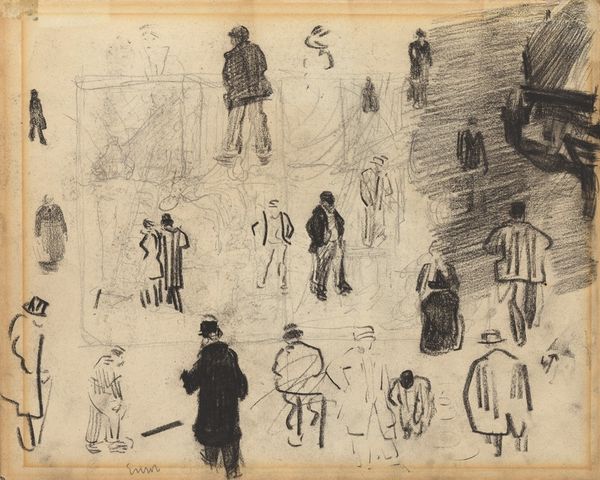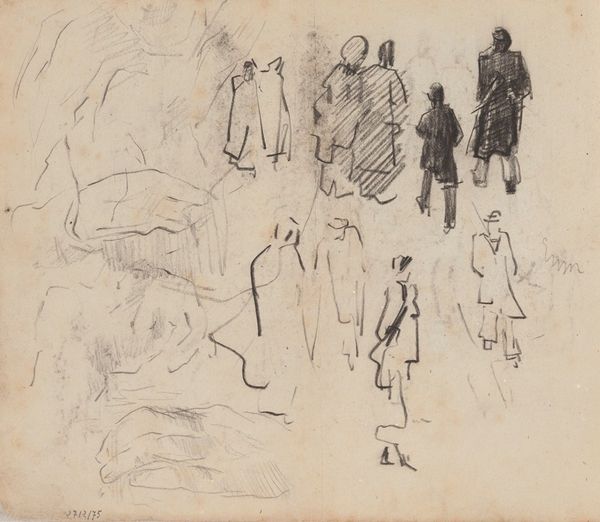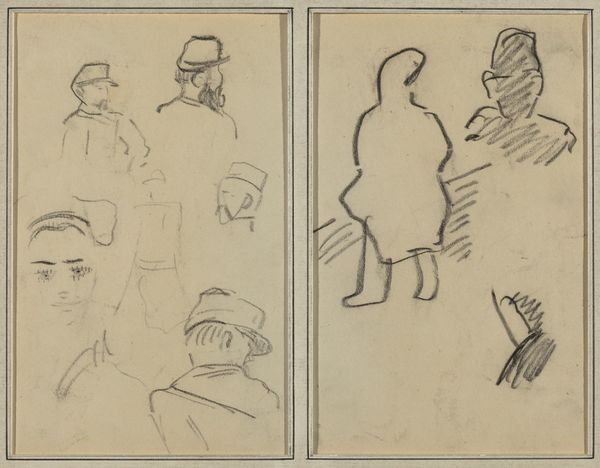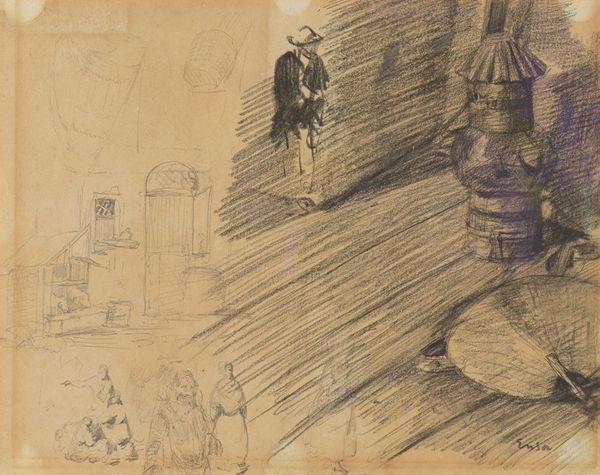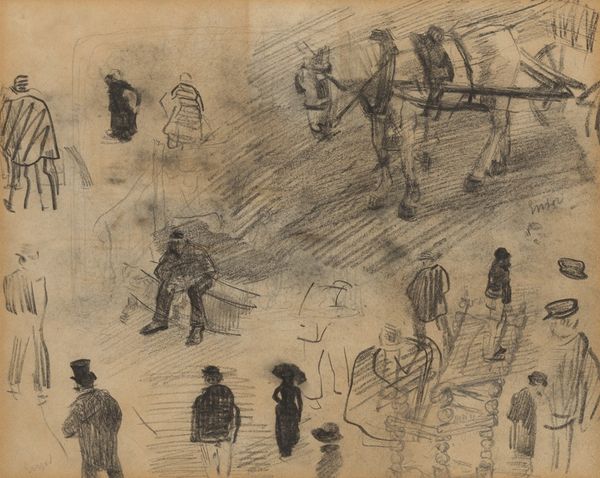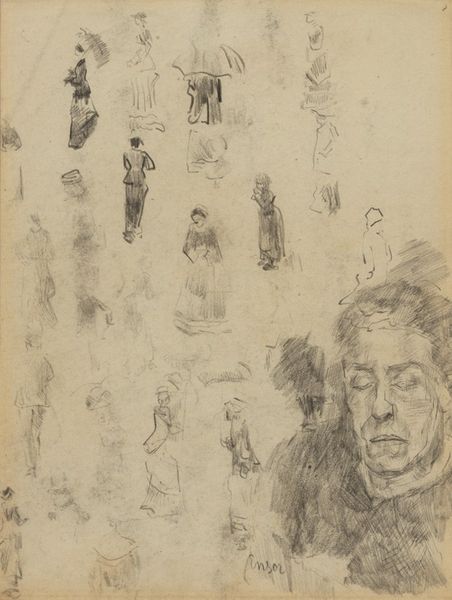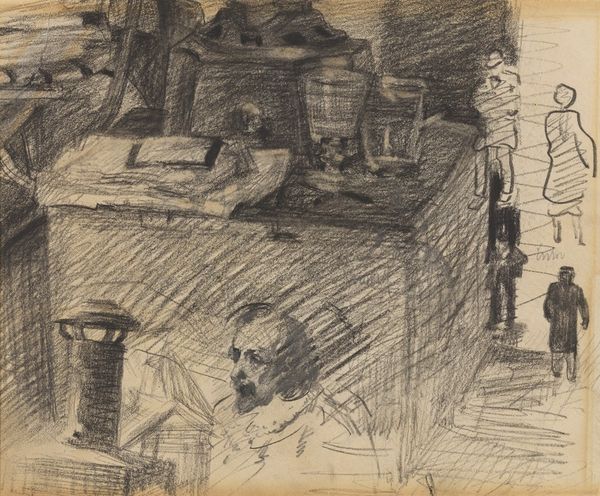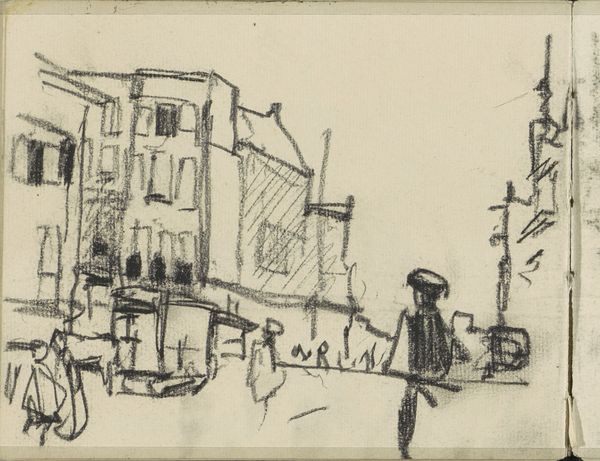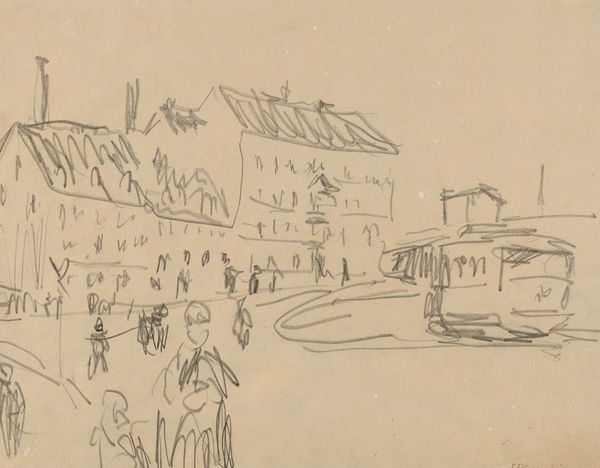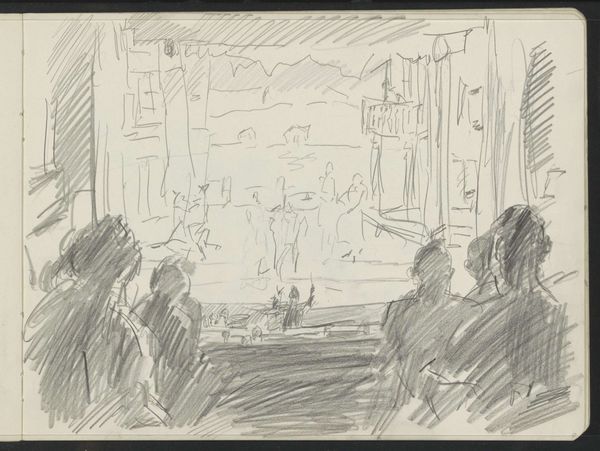
drawing, pencil
#
drawing
#
toned paper
#
light pencil work
#
quirky sketch
#
impressionism
#
pencil sketch
#
sketch book
#
incomplete sketchy
#
figuration
#
personal sketchbook
#
sketchwork
#
pencil
#
sketchbook drawing
#
genre-painting
#
sketchbook art
Copyright: Public Domain: Artvee
Curator: This energetic sketch, rendered in pencil on toned paper, is entitled "Kruiwagen, figuren en schets," or "Wheelbarrow, Figures and Sketch." It’s by the Belgian artist James Ensor, and dates from sometime between 1880 and 1885. Editor: Immediately, it gives the impression of fleeting moments captured from daily life. The sketchy style conveys a sense of immediacy, as if Ensor quickly jotted down observations from a bustling scene. Curator: Exactly. The scattered figures, some more defined than others, suggest a dynamic urban environment. The wheelbarrow becomes an anchoring symbol, perhaps representative of labor or the working class, prominent during that era of industrial expansion. Editor: And note how some of the figures are drawn with clear, heavy outlines while others are just suggestions, ghostly and fading into the background. There's a real contrast in the levels of attention. The symbol of this contrast speaks to the disparity of the different social actors. Curator: That inconsistency actually contributes to its charm, giving us access to the artist’s creative process. Consider the period: Impressionism was emerging, prioritizing fleeting impressions and subjective experience over meticulous realism. Editor: Right. Ensor, though Belgian, engaged with many trends coming out of Paris at the time. And that dark shading provides a visual weight and evokes the anxieties of burgeoning urbanization and societal transformation. It reminds me of Daumier. Curator: It’s not hard to see that visual comparison, especially when you look at Daumier's focus on ordinary people and social critique. With Ensor, however, it is more elusive, less narrative. He shows the modern experience itself, the chaos of it. Editor: Yes, it is very much about capturing a mood, a moment in time rather than conveying a story. The symbol becomes the scene itself. One feels a shared sense of transience when viewing this quick study. Curator: Absolutely. Ensor has recorded not just the images he saw but how they felt to witness, to process them. This quick study of fleeting observations offers profound insights into the human condition amid industrial changes. Editor: Reflecting on it, I agree. There’s a profound meditation on life, transience and the human experience—sketched hastily, but considered deeply.
Comments
No comments
Be the first to comment and join the conversation on the ultimate creative platform.
